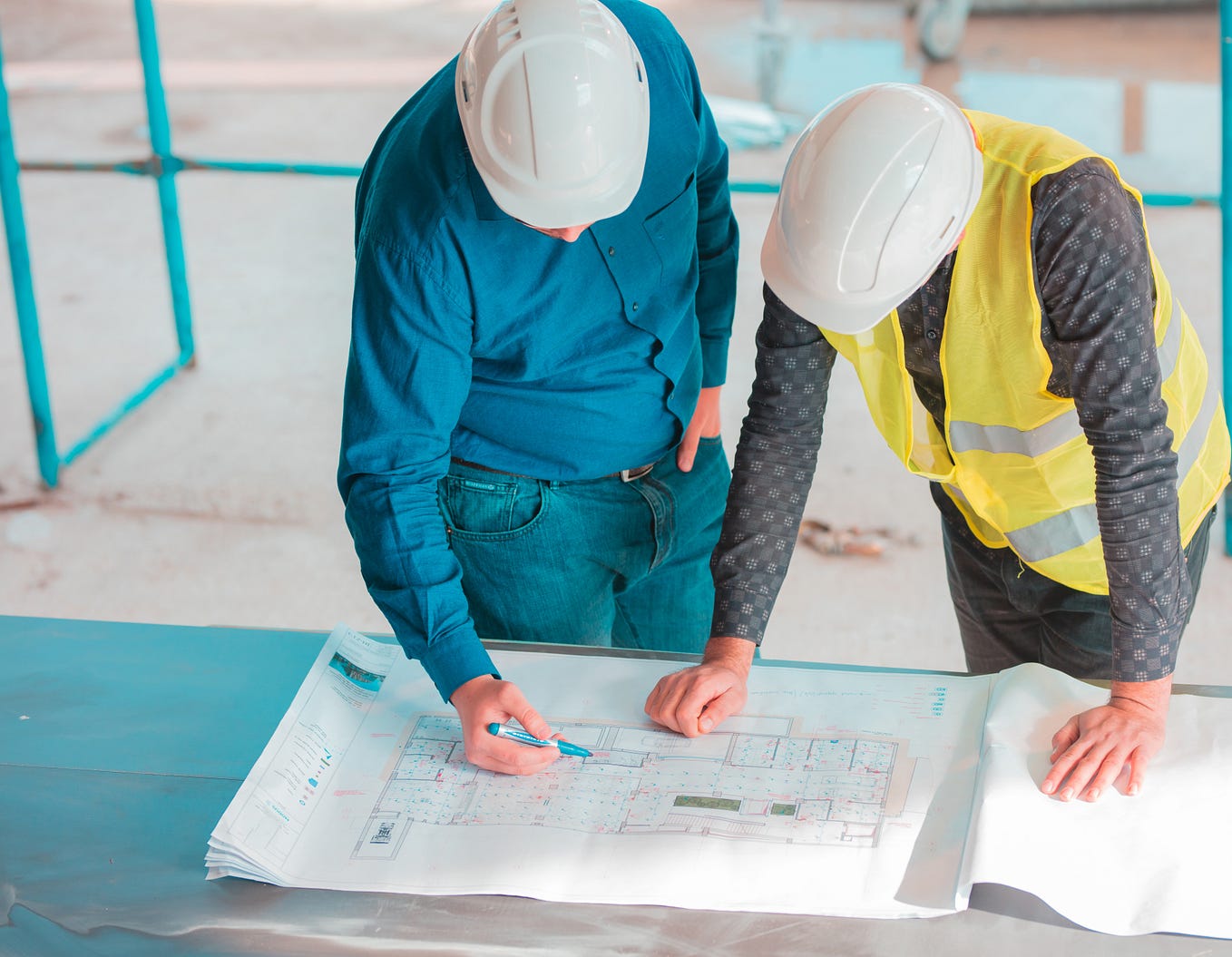Business
8 Sales-Boosting Strategies On How to Interpret Consumer Behavior

Interpreting consumer behavior is essential for businesses looking to boost sales and effectively cater to their target audience. Because you clicked on this article—we know this is important to you as well!
By understanding the underlying motivations, preferences, and decision-making processes of consumers, businesses can tailor their strategies to align with consumer needs and drive conversion.
Here are some key strategies you need to know so you can interpret your customer’s behavior to boost sales:
1. Conduct Market Research
Begin by conducting comprehensive market research to gather insights into your target audience.
Packaging mixed nuts, candy combos, or products with high variability? Did you learn about preferences first before setting your SKUs?
Use a combination of qualitative and quantitative methods such as surveys, focus groups, interviews, and data analysis to understand consumer demographics, preferences, purchasing habits, and pain points.
This research will provide a solid foundation for interpreting consumer behavior and identifying opportunities to boost sales.
2. Analyze Purchase Patterns
Utilize data analytics tools to analyze purchase patterns and trends among your target audience.
Look for commonalities in purchasing behavior, such as preferred products, buying frequency, peak times of purchase, and average order value.
Selling packaged supplements or other medicine? When do your customers get refills?
By understanding these patterns, businesses can optimize their product offerings, pricing strategies, and marketing efforts to better meet consumer needs and drive sales.
3. Identify Motivations and Pain Points
Delve deeper into consumer motivations and pain points to uncover the underlying factors driving purchasing decisions.
Consider factors such as convenience, price sensitivity, product quality, brand loyalty, social influence, and emotional triggers.
By identifying these motivations and pain points, businesses can tailor their messaging, product positioning, and customer experiences to address consumer needs and drive sales.
4. Leverage Social Proof and Influencer Marketing
Consumers often rely on social proof and recommendations from peers or influencers when making purchasing decisions.
Leverage social media platforms, customer reviews, testimonials, and influencer partnerships to showcase positive experiences and endorsements from satisfied customers.
By building trust and credibility through social proof, businesses can influence consumer behavior and boost sales.
5. Personalize Marketing and Recommendations
Utilize data-driven personalization techniques to tailor marketing messages and product recommendations to individual consumer preferences and behaviors.
Leverage customer segmentation, behavioral targeting, and dynamic content to deliver personalized experiences across various touchpoints, including email marketing, website interactions, and advertising campaigns.
Personalization enhances relevance, engagement, and conversion rates, ultimately driving sales.
6. Optimize the Customer Journey
Map out customer journey from awareness to purchase and beyond, identifying key touchpoints and potential friction points along the way. Optimize the customer experience by streamlining processes, improving website navigation, and providing seamless omnichannel experiences.
By removing barriers and enhancing convenience at every stage of the customer journey, businesses can increase conversion rates and drive sales.
7. Offer Value-Added Services and Incentives
Provide value-added services, incentives, and rewards to incentivize purchases and foster loyalty among customers.
Offer perks such as free shipping, discounts, loyalty programs, and exclusive access to promotions or events. By providing additional value beyond the product itself, businesses can create positive associations, encourage repeat purchases, and drive sales.
8. Monitor and Adapt
Continuously monitor consumer behavior, market trends, and competitive landscape to stay agile and adapt strategies accordingly.
Utilize tools such as web analytics, social listening, and market research to track performance, identify emerging trends, and anticipate shifts in consumer preferences.
By staying proactive and responsive to changing dynamics, businesses can maintain a competitive edge and sustain long-term sales growth.
Conclusion
Interpreting consumer behavior is a dynamic process that requires ongoing analysis, adaptation, and optimization.
By conducting market research, analyzing purchase patterns, identifying motivations and pain points, leveraging social proof, personalizing marketing, optimizing the customer journey, offering incentives, and staying vigilant, businesses can gain valuable insights into consumer behavior and implement strategies to boost sales effectively.
When you start aligning with your customers’ needs and preferences, you can definitely build lasting relationships, drive conversion, and achieve sustained success in today’s super competitive marketplace.
Business
Japanese Style in Interior Design: Minimalism or Not? In Interior Design London

Japanese style in interior design has long fascinated and inspired people worldwide. Its roots in simplicity, natural materials, and a profound respect for space and light create an aesthetic that is both tranquil and sophisticated. In this article, we explore whether Japanese style inherently embodies minimalism, how to achieve a stylish and modern Japanese-inspired interior, the techniques to avoid, and how to blend Japanese elements with other design styles effectively.
The Essence of Japanese Style
Japanese interior design in London apartments is characterised by its minimalistic approach, emphasising uncluttered spaces, natural materials, and a harmonious balance between the indoors and outdoors. This style is rooted in the cultural philosophy of “wabi-sabi,” which finds beauty in imperfection and simplicity. Key elements include:
Natural Materials: Wood, bamboo, paper, and stone are commonly used, reflecting a connection with nature.
Neutral Colors: A palette of whites, beiges, and earth tones creates a calm and serene environment.
Low Furniture: Traditional Japanese furniture is low to the ground, such as tatami mats and futons, promoting a sense of grounding.
Sliding Doors: Shoji screens, made of wood and paper, are a hallmark of Japanese interiors, providing flexible space divisions.
Minimalism in Japanese Design: A Closer Look
While Japanese interior design is often synonymous with minimalism, it’s essential to recognise that it is not minimalism for minimalism’s sake. Instead, it’s about creating a space that feels open, airy, and serene. In the context of interior design in London, where space can be at a premium, adopting Japanese minimalism can be both practical and aesthetically pleasing.
Key Aspects of Minimalism in Japanese Design
Simplicity and Functionality: Every item has a purpose, and there is an absence of superfluous decorations.
Open Spaces: Interiors often feature open floor plans and large windows to enhance the flow of natural light.
Clutter-Free Environments: Storage solutions are integrated seamlessly to maintain a clean and organised look.
How to Make Japanese Interiors Stylish and Modern
Integrating Japanese elements into a modern interior design in London can result in a stylish and contemporary home. Here are some tips to achieve this look:
Embrace Natural Light
Maximise the use of natural light by incorporating large windows and using light-coloured blinds or curtains. Natural light enhances the sense of space and brings out the natural beauty of materials.
Incorporate Natural Materials
Use wood, stone, and bamboo extensively. For instance, wooden flooring, bamboo furniture, and stone countertops can add a touch of Japanese elegance to your home. In a city like London, these materials can bring a natural and calming ambience to urban living spaces.
Simplify Your Space
Declutter your home and focus on essential furniture pieces. Opt for built-in storage solutions to keep surfaces clean and free from unnecessary items. This approach aligns well with the limited space often found in London homes.
Add Japanese Accents
Incorporate elements like shoji screens, tatami mats, and low furniture to introduce Japanese aesthetics. Additionally, consider adding bonsai plants or ikebana (Japanese flower arrangements) for a touch of natural beauty.
Blend with Modern Elements
Combine traditional Japanese elements with modern design features. For instance, pair a minimalist Japanese wooden table with sleek, contemporary chairs. This blend creates a harmonious balance between the old and new, suitable for the dynamic nature of interior design in London.
Prohibited Techniques: What Not to Do
While creating a Japanese-inspired interior, there are certain pitfalls to avoid to maintain authenticity and harmony.
Overcrowding the Space
Avoid filling the space with too many items, even if they are of Japanese origin. The essence of Japanese design lies in simplicity and breathing space. Overcrowding negates the minimalist principle and can make the space feel cramped and chaotic.
Ignoring Balance and Harmony
Japanese design is all about balance and harmony. Avoid mismatched furniture and clashing colours. Stick to a cohesive colour palette and ensure that every piece complements the overall aesthetic.
Using Synthetic Materials
Natural materials are fundamental to Japanese design. Avoid using synthetic or overly processed materials as they can disrupt the natural and serene atmosphere. Opt for authentic wood, stone, and paper to maintain integrity.
Neglecting Functionality
Every item in a Japanese interior should serve a purpose. Avoid purely decorative pieces that do not add functionality to the space. This principle ensures that the space remains uncluttered and purposeful.
Blending Japanese Style with Other Design Styles
Japanese style can be beautifully integrated with other design styles to create unique and personalised interiors. Here are some effective ways to blend Japanese elements with other styles:
Scandinavian-Japanese Fusion (Japandi)
The Japandi style combines the simplicity and functionality of Scandinavian design with the minimalism and natural elements of Japanese interiors. Both styles prioritise clean lines, neutral colours, and natural materials, making them a perfect match. This fusion can be particularly effective in interior design in London, offering a cosy yet sophisticated atmosphere.
Modern Japanese
Integrate modern elements with traditional Japanese design to create a contemporary look. Use sleek, modern furniture alongside traditional Japanese pieces. Incorporate technology seamlessly to enhance functionality while maintaining a minimalist aesthetic.
Industrial Japanese
Blend the raw and edgy elements of industrial design with the calm and natural aspects of Japanese style. Use materials like exposed concrete and steel alongside wood and bamboo. This combination can create a unique, urban look that is ideal for lofts and modern apartments in cities like London.
Traditional Japanese with a Twist
Incorporate bold colours or modern art pieces into a traditional Japanese interior to add a contemporary twist. This approach can make the space feel more vibrant and dynamic while still maintaining a strong connection to Japanese aesthetics.
Interior Design London: A Perfect Setting for Japanese Style
London’s diverse architectural landscape and cosmopolitan nature provide an excellent backdrop for Japanese-inspired interiors. The key to successfully implementing Japanese design in London lies in adapting its principles to suit the local context.
Maximising Small Spaces
London homes often face space constraints. Japanese design’s emphasis on minimalism and functionality can help maximise small spaces, making them feel larger and more open. Incorporate multifunctional furniture and clever storage solutions to optimize space usage.
Embracing Natural Elements in Urban Settings
Incorporating natural materials and elements can bring a sense of tranquillity to the bustling city life in London. Use plants, natural wood, and stone to create a serene oasis amidst the urban environment.
Creating a Balance of Tradition and Modernity
London’s rich history and contemporary vibe provide an ideal setting for blending traditional Japanese elements with modern design. This balance can result in a stylish and harmonious interior that reflects both heritage and innovation.
Japanese style in interior design offers a timeless and versatile aesthetic that can be adapted to various contexts, including interior design in London. Whether you choose to embrace its minimalist roots or blend it with other styles, the key lies in simplicity, natural materials, and a harmonious balance. By avoiding overcrowding, maintaining functionality, and integrating natural elements, you can create a stylish and modern Japanese-inspired interior that is both beautiful and functional.
Business
The Art of Retail Adaptation: A Symphony of Space, Products, and Customers

Today’s competitive retail landscape demands more than just a great location and product selection.Successful retailers are now creating engaging experiences that go beyond the basics. Stores should strive to make their customers’ shopping experiences unforgettable so that they return for more.
A store’s physical setting can significantly impact the shopping experience for customers. Lighting, music, and fragrance are all tools at a retailer’s disposal for setting the mood. To set the mood for a high-end jewelry store, one may hear gentle classical music and dim lighting, whereas a sporting goods store would play loud, active music and bright lights.
Customers are more likely to have a memorable and engaging purchasing experience if it includes interactive aspects. Possessing a product demonstration space or allowing clients to customize their purchases are two examples of what could fall under this category. A clothes business may have a monogramming service, while a cosmetics store may feature a make-up station where clients may test out various items.
Customers love it when they feel valued and appreciated, and personalized service provides just that. With the help of sales associate recommendations, loyalty programs, and unique offers, retailers can make shopping a more personalized experience. A grocery business may provide a discount to customers who join their email list, while a shoe company may have a program where customers can earn points towards free shoes.
Many stores are excelling at making customers’ shopping experiences one to remember such as,
Apple is an expert at making people feel connected to a certain environment. Their stores are streamlined, modern, and aesthetically pleasing, with an emphasis on customer service. Customers can participate in a variety of interactive activities offered by Apple, such as trying out the newest items.
Shoppers can lose themselves in the magical world of Disney at any one of their Disney stores. There is a large variety of Disney items, as well as interactive exhibits and character meet-and-greets, at these stores.
Warby Parker is a web-based company that has changed the way people buy eyeglasses. Customers can take advantage of their free at-home trial program by choosing five different frames to try on. Warby Parker’s dedication to social responsibility is another selling point for the company.
The Importance of Customer Experience
Retailers no longer have the luxury of choosing how to make customers’ shopping experiences memorable; it’s a must. Customers in today’s retail market have numerous options. In the end, it will be the retailers who succeed in making customers happy and leaving a lasting impression.
The Future of Retail, According to Me, Is Experiential
When it comes to retail, experiences are king in the future. Going into a store, making a purchase, and then leaving is no longer enough for today’s customers. Their goals are to be amused, informed, and motivated. Those stores that can cater to customers’ need for unique experiences will be successful going forward.
Maximizing Every Available Area: The Space Canvas
Whether it’s a large department store or a small boutique, every retail space offers a different blank slate. In the past, store design was mostly determined by gut feelings with a dash of industry norms. However, AI-generated floor plans and other data-driven innovations are changing the game when it comes to space planning. Retailers may maximize product visibility, optimize visitor flow, and target certain demographics with the help of these tools. Envision a sports goods store where the interactive climbing wall serves as the focal point, luring families in and directing them to browse pertinent stuff as they go.
The strategic utilization of space goes beyond only the physical arrangement. The boundaries between online and offline shopping are becoming more porous as a result of many retailers. Digital signage offers targeted marketing and product information, while interactive kiosks let consumers peruse a broader assortment of products. Envision a luxury furniture store where clients can digitally arrange pieces in their homes using augmented reality (AR) technology to make sure they fit perfectly before buying.
Harmony in Products: Creating the Ideal Blend
At its core, shopping is all about the products a store has to offer. But nowadays, it’s not enough to just have a basic assortment on shelves. Retailers need to choose the perfect products to create a harmonious display that appeals to their customers and enhances their brand’s image. This requires research into local demography, an awareness of consumer tastes, and maybe even the use of storytelling techniques.
A Story’s Influence
Narratives are hardwired into the human brain. Merchants may engage consumers on a deeper emotional level by crafting stories around their products. For example, your neighborhood bookshop that goes above and above by inviting local authors to speak at events and holding book clubs so that people can connect with one another and feel like they’re part of something more than simply a transaction. Customers are more likely to be loyal to the brand and spend more money when they have an emotional connection to it.
Additionally, the product mix should be flexible. While bigger stores can provide a wider variety with specialized areas for different needs or interests, smaller businesses might do better with a more curated assortment. A more personal and genuine shopping experience can be achieved by including local or handcrafted products, which can also provide a unique touch.
The Master of the Experience: Getting to Know the Customers
A thorough familiarity with the customer is fundamental to effective retail adaption. Beyond consumer demographics, retailers should understand psychographics to learn about consumers’ beliefs, motives, and purchasing habits.
Looking Past Demographics
While age, income, and geography are important factors, they do not tell the whole story. Values, experiences, and the need to connect are what motivate modern consumers. Retailers can tap into customers’ more profound desires by learning about their underlying motives and tailoring their products and services accordingly.
Insights on customers are best gathered with the use of technology. Customer preferences and behavior can be better understood with the use of loyalty programs, social media analytics, and even heat mapping in-store. With this information, marketers can target specific audiences with relevant ads, provide more relevant product suggestions, and even design bespoke shopping events, such as VIP previews or special product debuts.
How Retail Will Adapt in the Future: A Never-Ending Journey
Retail adaptation is an art form that evolves throughout time. Retailers must be nimble and adaptive to keep up with the ever-changing landscape of technology, customer expectations, and trends. In the years to come, the retail industry will be defined by the following trends:
The significance of omnichannel integration, or the smooth combination of online and offline channels, is only going to grow. Customers anticipate a consistent experience across all touchpoints, be it in-store, online, or via a mobile app.
The Growth of Retail Experiences: Shopping is about more than just buying and selling anymore. Differentiation will depend on your ability to create engaging experiences that teach, amuse, and inspire your customers. Envision a grocery store that includes cooking demos and tastings, or a clothes store that has an in-house style studio for one-on-one consultations.
Customers care more and more about how their purchases will affect society and the environment, making sustainability a top priority. An increasing number of consumers will support businesses that show they care about the environment by using energy-efficient techniques, using sustainable packaging, and sourcing their products.
In the End, Everyone Benefits
The goal of good retail adaptation is not merely to increase sales; rather, it is to benefit consumers and merchants alike. Building enduring relationships, fostering brand loyalty, and eventually increasing sales can be achieved by shops by tailoring their location, product mix, and overall experience to meet the needs of individual customers.
Shruti Salunkhe, Author, is a seasoned Product and Software Professional with over seven years of experience spearheading B2C product innovation. She shares her expertise through articles and blog posts, helping others navigate the exciting world of
Agile[https://medium.com/design-bootcamp/the-role-of-product-management-in-agile-development-711e91b6a129],Product Management Strategies [https://www.shrutisalunkhe.com/blog/five-product-roadmapnbspstrategies] and
Unlock the potential of UX [https://medium.com/@shrutisalunkhe/ux-bias-glossary-30b72e42a8ff]. Her insightful articles and blog posts on https://www.shrutisalunkhe.com/blog and Medium https://medium.com/@shrutisalunkhe serve as a valuable resource for passionate professionals seeking to thrive in the tech world. Whether you’re looking to learn product management strategies or master the art of product development, Shruti’s got you covered. Dive into her writing and embark on a journey of product development mastery!
Business
Mastering Precision in Construction: The Role of Plumbing Estimating Services

In the intricate world of construction, precision is paramount. Every project, whether big or small, demands meticulous planning, accurate estimations, and seamless execution to ensure success. Within the realm of plumbing installations, achieving precision requires expertise, attention to detail, and the right tools. In this blog post, we explore the significance of plumbing estimating services and how they contribute to mastering precision in construction projects.
Understanding Plumbing Estimating Services
Plumbing estimating services are specialized solutions offered by professional estimating companies to accurately determine the materials, labor, and costs associated with plumbing installations. These services go beyond simple calculations, utilizing advanced software and industry expertise to provide comprehensive estimates tailored to each project’s unique requirements. From residential renovations to commercial constructions, plumbing estimating services play a crucial role in facilitating informed decision-making and project planning.
The Value of Expertise
Partnering with a reputable estimating company for plumbing projects ensures access to a team of experienced professionals with in-depth knowledge of construction practices and industry standards. These experts understand the nuances of plumbing systems, regulations, and best practices, enabling them to generate precise estimations that account for every detail. By leveraging their expertise, construction firms can mitigate risks, avoid costly errors, and optimize resource allocation for maximum efficiency.
Embracing Technology for Accuracy
In today’s digital age, technology has revolutionized the construction industry, offering powerful tools to enhance accuracy and efficiency. Estimating companies utilize advanced software platforms such as Xactimate to streamline the estimation process and minimize human error. With features like database integration, 3D modeling, and real-time updates, Xactimate estimating services empower estimators to generate precise estimates quickly and confidently, thereby driving productivity and project success.
Enhancing Collaboration and Communication
Effective communication and collaboration are essential components of successful construction projects. Plumbing estimating services facilitate seamless collaboration between stakeholders by providing clear, detailed estimates that serve as a common reference point for discussions and decision-making. Whether communicating with clients, subcontractors, or project teams, having accurate estimations from a trusted estimating company fosters transparency, trust, and alignment, leading to smoother project execution and client satisfaction.
Maximizing Efficiency and Profitability
By outsourcing plumbing estimating services to a specialized company, construction firms can maximize efficiency and profitability throughout the project lifecycle. Accurate estimations enable better budgeting, resource planning, and risk management, helping to minimize cost overruns and delays. Additionally, leveraging the expertise of estimating professionals frees up internal resources, allowing construction firms to focus on core activities and strategic initiatives, ultimately driving growth and profitability.
Conclusion
In conclusion, plumbing estimating services offered by reputable estimating companies play a vital role in achieving precision and excellence in construction projects. By harnessing the expertise of experienced professionals and leveraging cutting-edge technology like Xactimate, construction firms can generate accurate estimates, streamline workflows, and deliver projects of unparalleled quality. Whether embarking on a new build, renovation, or repair project, partnering with a trusted estimating company ensures that precision remains at the forefront, setting the stage for success in the dynamic world of construction.
-

 Technology7 months ago
Technology7 months agoCrack the Code: Optimizing Your SEO Efforts with Advanced Rank Tracking Techniques
-

 Fashion7 years ago
Fashion7 years agoThese ’90s fashion trends are making a comeback in 2017
-

 Entertainment7 years ago
Entertainment7 years agoThe final 6 ‘Game of Thrones’ episodes might feel like a full season
-

 Celebrities8 months ago
Celebrities8 months agoLuc Coulier: Age, Bio, Weight, Height, Family, Career, Net Worth and More
-

 Fashion7 years ago
Fashion7 years agoAccording to Dior Couture, this taboo fashion accessory is back
-

 Entertainment7 years ago
Entertainment7 years agoThe old and New Edition cast comes together to perform
-

 Sports7 years ago
Sports7 years agoPhillies’ Aaron Altherr makes mind-boggling barehanded play
-

 Business7 years ago
Business7 years agoUber and Lyft are finally available in all of New York State





